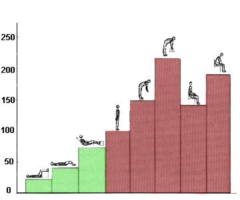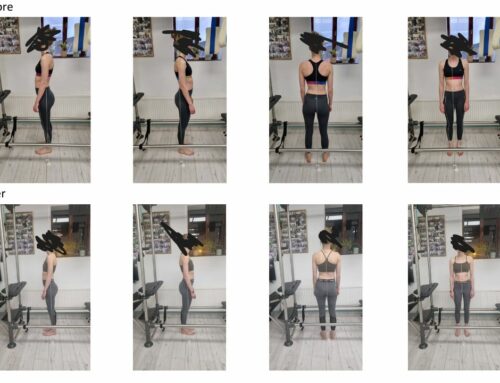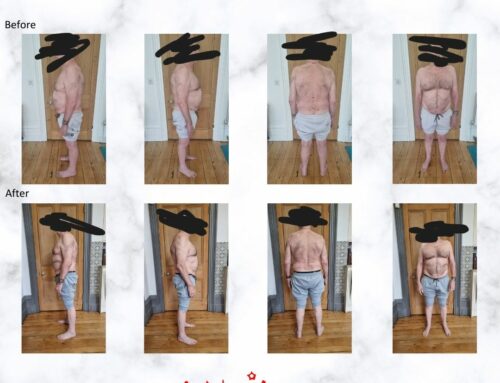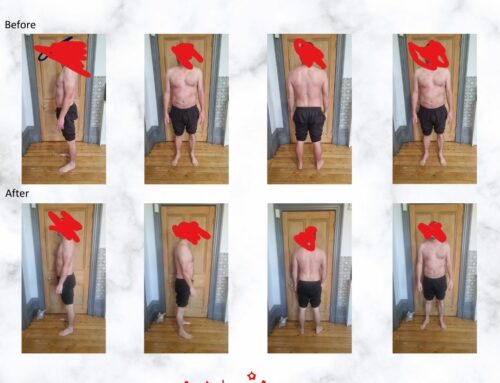Creep is not about halloween, pumpkins and goblins. ‘Creep’ refers to the progressive deformation of bodily structures, which occur when the structures are under a constant load that they were not designed to handle. It’s a neuromuscular response to static positions. If you have sat at a desk all day, had a long plane journey or long bike ride and then you stand up and move and feel stiff, this is ‘Creep’.

Leon Chaitow naturopathic book states – “Creep in the connective tissues – which include myofascial (parallel elastic) and series of elastic components – can occur in as little as 3 minutes when under load (McGill 2002)”.
It might be helpful to think of creep in terms of something like a rubber fan belt on a car. When you repeatedly or consistently pull, stretch or hold the fan belt in ways it was not designed to be held for prolonged periods, the fan belt is not happy. It may eventually stretch, become deformed and no longer be able to bounce back into shape and therefore not give efficient engine function. The same thing can happen to structures throughout your body, especially the muscles and tissues in your back.

The diagram to the right shows how the load on the tissues varies, depending on our body position.
Creep kicks in when we are in any spinal position from flexion to rotation. There is least pressure on a disc when lying down or in a semi flexed position than when slumped forwards.
A medical study showed that after holding a stooped posture for three minutes with the back hunched and head stooped forwards. Subjects were less persistent on a puzzle solving task (measured by the number of attempts made to solve the puzzle) than those who held an upright physical posture (Risking and Gotay).

It is advised that those who experience prolonged full flexion postures (as might a seated warehouse shipper/receiver, gardener, rower or construction worker) to stand and walk for a few minutes prior to performing demanding manual exertions. Indeed, temporary joint flexion laxity, following a bout of full flexion, may increase the risk of hyperflexion injury to certain tissues.
The Stuart McGill study looked at 27 males and 20 females of a period of 20 minutes. The flexion increased 5.5 degrees over the 20 mins. ‘The flexion—creep data was fitted with a first-order step input response having a time constant of 9.4 min. Maximum flexion was also documented over the recovery phase, lasting 30 min, indicating that subjects regained approximately 50% of their resting joint stiffness within 2 min of resuming relaxed lordosis, although full recovery took longer than the flexion—creep, indicating the presence of viscoelastic hysteresis. For this reason it may be prudent to advise those who experience prolonged’.1.
Our client Graham not only sits at a desk all day but also rows as a hobby and cycles to work. Pilates can greatly help him. “Rowing requires good posture and flexibility both of which i feel pilates is greatly helping me with. The flexibility is needed to reach forward (the better reach the more time your oar spends in the water which translates into speed of the boat. My flexibility, whilst still relatively poor is significantly better due to pilates”. Pilates client Graham

Graham in action -Mellalieu Photography
“Posture – If you don’t sit up straight the balance of the boat is thrown off and my natural posture prior to starting pilates was nowhere near as good as it is now, the natural thing to do as you get tired is to let the posture go but pilates is helping me naturally keep posture better for longer”. Pilates client Graham
1.Creep response of the lumbar spine to prolonged full flexion – Author links open overlay panel S.M.McGillPhDS.BrownBsc





